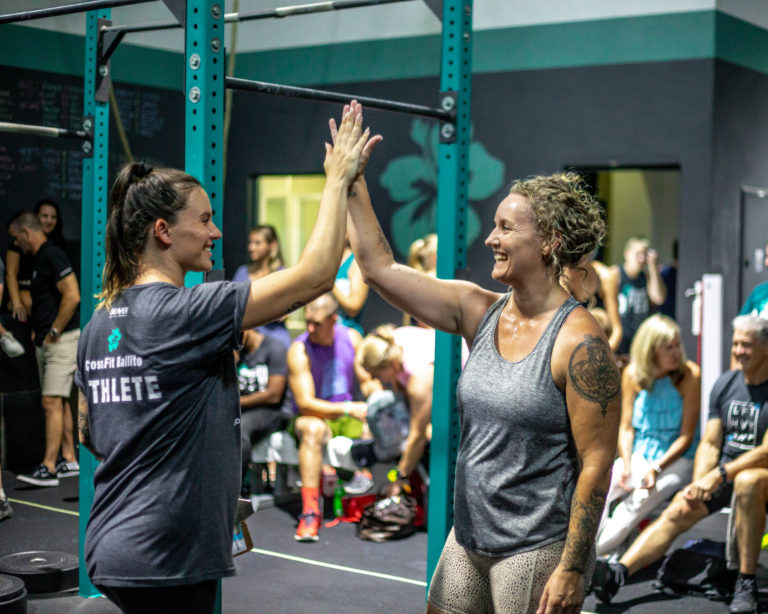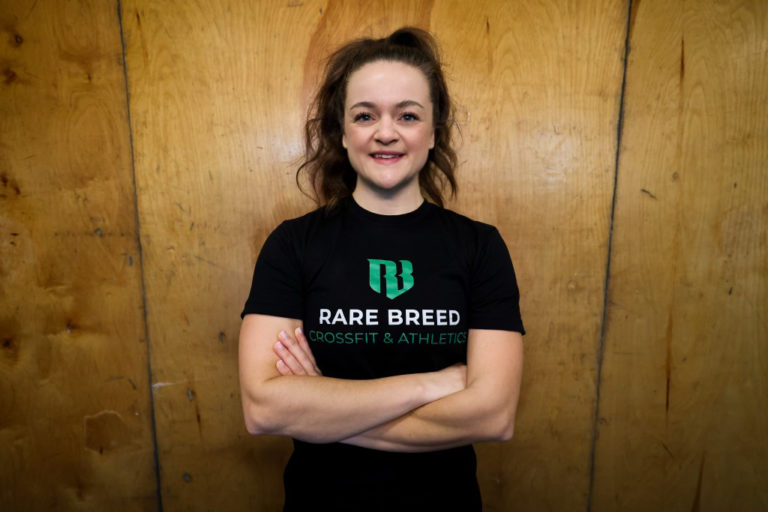Starting the journey as a CrossFit trainer is an exhilarating and life-changing experience. It’s a combination of preparation, learning, and relationship-building that sets the stage for a successful first year. Here are four key insights to guide you on that journey.
#1 – Preparation is a Must
As coaches, we must command a room. We clearly communicate simple and complex movements, create an atmosphere, answer questions, and evaluate our athletes for performance and safety. That’s a lot. Preparation is our first tool to become successful trainers and run classes with impact.
Before each class, study the workout and the movements. Understanding the intended stimulus and having scaling options and calorie/distance conversions ready to go is essential. Check who’s signed up for your class so you can modify for different needs.
Use a notebook to write out points of performance for each movement and scaling options. Review these before class to keep your mind fresh. The CrossFit Training YouTube channel and CrossFit Training Instagram are great resources. Often, writing notes and reading them before class is enough to build your confidence and be a quick reference.
Beyond mechanics, check your gym’s programming cycle. Remind athletes of the intended focus and outcome at every class. They’re more likely to engage and stay motivated when they understand why they’re doing something.
Practice the whiteboard brief for every workout out loud. It might feel awkward, but the more you practice, the smoother your delivery. It also frees up brain space to add personality and excitement. Your personal flare will engage athletes for a stronger connection. Keep this introduction brief (no more than five minutes) and include the following:
- State the workout
- Explain the stimulus (overall time, time per round/movement, loading parameters, how the workout should feel/expectations)
- Demonstrate the movements
- Discuss scaling options
- Tell them what to do next
Perform the workout ahead of time. Early in my coaching, I took a morning class and then coached that workout in the evening. Watching an experienced coach gives you insights to utilize. This extra step also eases nerves and boosts your confidence.
#2 – Ask for Feedback and Be Open to Growth
No matter how long you’ve been an athlete, coaching is different. There’s always room to grow. Ask for feedback from other coaches, members, and the affiliate owner. Attend other classes to see what works — or doesn’t — and see where you can improve.
The more specific you can be when asking for feedback, the better. For example, you might ask:
- What did you think of the scaling options today?
- Was the PVC progression we worked on at the beginning of class helpful during the workout?
- Was there anything missing from the introduction that would have helped you during the workout?
Don’t be afraid to ask coaches for their input. Athletes can also give valuable insight into what worked well or what might have been unclear. When you get feedback, take note. Ask follow-up questions for a deeper dive. By seeking feedback, you show a commitment to your growth and the quality of your coaching. It’s a signal to everyone you take pride in your craft and want to be your best.
When using feedback, make one change at a time so you can see what’s effective. Making too many changes at once can be overwhelming and make it difficult to parse what leads to better results. Instead, focus on one adjustment and build from there. This stepped approach will help you refine your coaching style and make progress without feeling overwhelmed.
Remember, feedback is ongoing — there’s always something new to learn, even for seasoned coaches. As you grow, you’ll find feedback is an essential tool in your coaching toolkit. Stay open to criticism. You’ll not only improve your coaching but also create a culture of learning.
#3 – Build Relationships and Encourage Connections
Community is at the heart of CrossFit. How people feel inside your gym matters. Staying positive can be the reason athletes look forward to class. CrossFit is tough, both physically and mentally, but it’s the community that brings people back. Your guidance and the encouragement from other athletes transform a challenging workout into something empowering. Building those relationships is not just important; it’s your responsibility.
 Our job as coaches is to nurture a community where athletes feel supported. Help them feel part of something bigger. This real sense of community is a spark plug for success, both inside and outside the gym. When people feel like they belong, they’ll keep showing up and push through their limits.
Our job as coaches is to nurture a community where athletes feel supported. Help them feel part of something bigger. This real sense of community is a spark plug for success, both inside and outside the gym. When people feel like they belong, they’ll keep showing up and push through their limits.
Take time to get to know your athletes. Ask about their life. Personal conversations give you insight beyond the gym. But don’t let that connection end with one conversation. Check in when you see them, whether it’s asking how a soccer game went or if they got a new job. This shows you are invested.
Find ways to connect members who have shared interests and challenges. These small connections make the gym a hub where people unite and thrive. They help create a place where people genuinely want to succeed, not just for themselves but for each other.
At its core, CrossFit works over the long term because of the people. The supportive and competitive nature of the community is what drives success. The workouts are incredible, of course, but the people and the coaches keep people coming back every day to your specific gym. Remember that each time you take the floor and with each coaching interaction you have. When one person succeeds, the community succeeds. And when the community thrives, so do you as a coach.
#4 – Avoid Burnout
It’s easy to get caught up in the excitement of being a new coach and want to do everything all at once. Remember, the key is to pace yourself. Build a sustainable schedule. Taking on too much leads to exhaustion and frustration, and it may make you question why you started coaching in the first place.
Don’t sacrifice your own training. Taking time for your fitness isn’t selfish. It’s essential. It keeps you connected to the same experiences your athletes go through and deepens your understanding of movements. Training keeps the passion for CrossFit alive. When members see you putting in the work, it energizes them. The commitment you bring to your own training will naturally inspire those around you.
Put It All Together
Your first year as a CrossFit coach is quite a journey! Prepare, ask for feedback, build genuine relationships, and try not to get discouraged. Focus on your development, support your athletes, and care for your own well-being. With that, you can lay the foundation for a rewarding coaching career.

 Katie Howland (CF-L1) is based in Kansa City, Missouri. She started CrossFit in 2022 and earned her CrossFit Level 1 Trainer credential in September 2023. Howland was hired as one of the first coaches at Rare Breed CrossFit & Athletics in February 2024. She finds passion in working with athletes new to CrossFit.
Katie Howland (CF-L1) is based in Kansa City, Missouri. She started CrossFit in 2022 and earned her CrossFit Level 1 Trainer credential in September 2023. Howland was hired as one of the first coaches at Rare Breed CrossFit & Athletics in February 2024. She finds passion in working with athletes new to CrossFit.